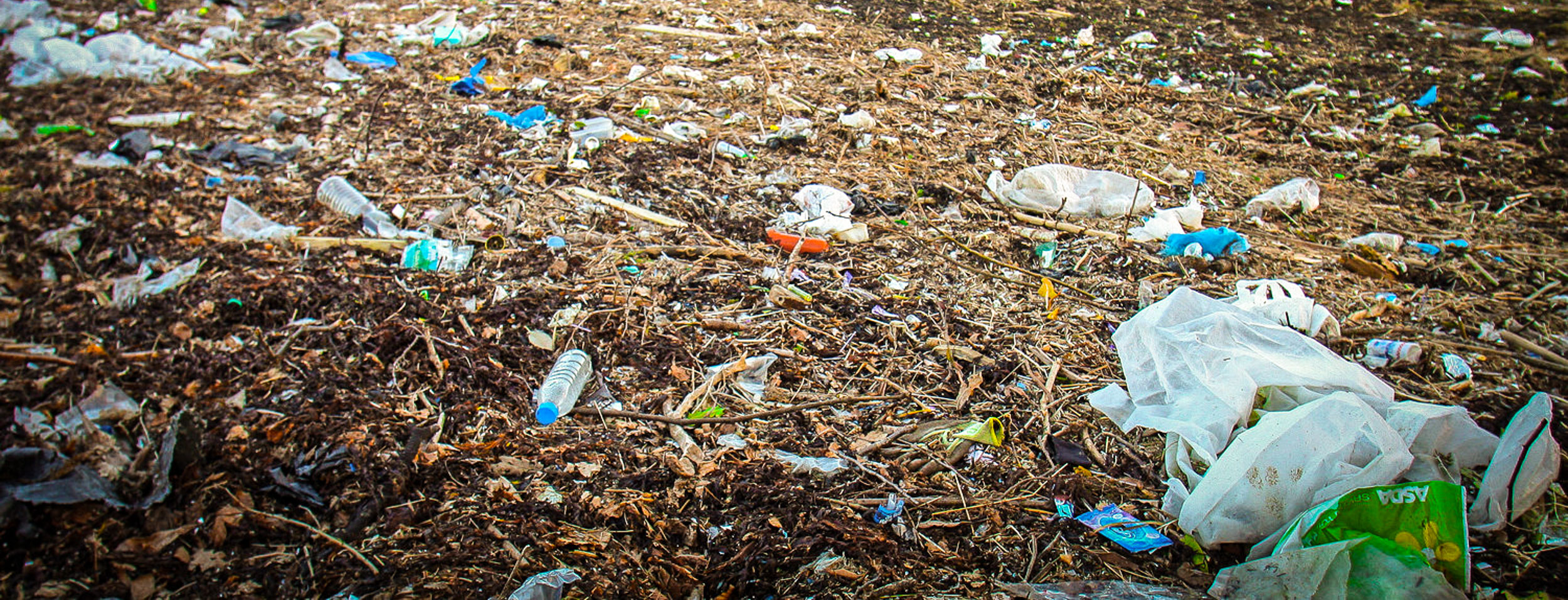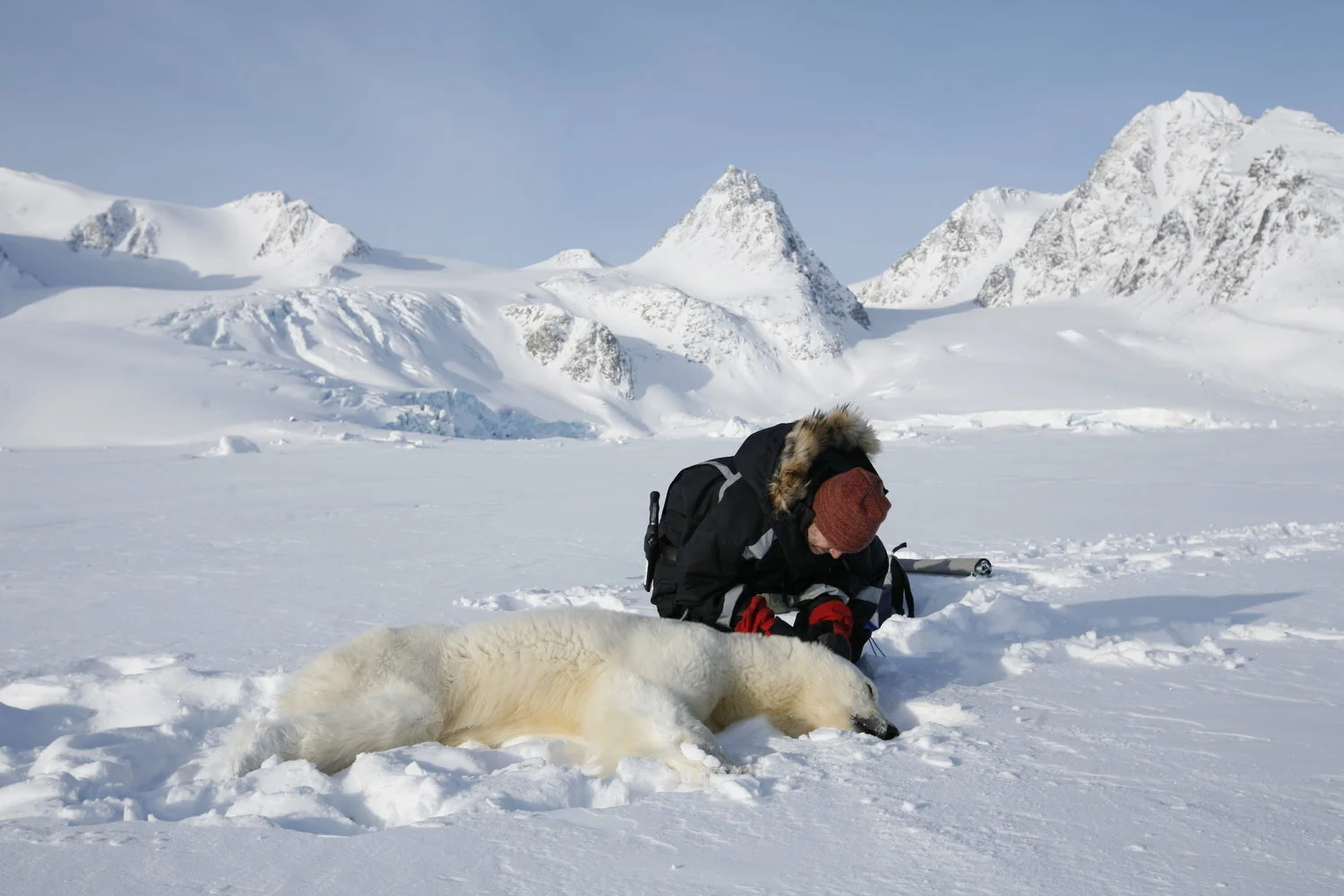Confronting Plastic Pollution With Bacteria
SCIENCE / BLUE BIOECONOMY
Writer: Vibeke Os / UiT
Photographs: John Cunningham, Linnea Nordström, Vibeke Os
March 2019
The oceans are filling with plastic. Some great rivers in highly populated areas of the world are hardly visible below a flowing mass of trash. And in not so populated areas like the coast of Hordaland in Norway, a rare Cuvier’s beaked whale was found stranded with its stomach full of plastic.
Everywhere solutions are being searched for to confront plastic pollution. In Tromsö scientists from the MarPlast project are working on a somewhat unexpected possible solution, as science writer, Vibeke Os explains: Bacteria.
Yes, our saviors may appear in the form of bacteria, those little rascals with the undeservedly bad reputation. Not because they break down plastic waste, as you might think - but because certain bacteria can produce plastic: eco-friendly, biodegradable plastic which could replace the traditional plastics we are all so anxious to eliminate from nature, the oceans and our lives.
The possibility of fish-waste fed bacteria being able to produce eco-friendly, biodegradable plastic may contribute greatly to fighting plastic waste in nature. Photographed off the coast of North Norway. JONAA©Linnea Nordström
Plastic as a carbon store
Bacteria are everywhere, around us and inside us. It turns out that something akin to plastic serves as an energy reserve for many bacteria. Instead of storing fat for times when food is scarce as people do, bacteria store energy as polyhydroxyalkanoate (PHA), a polymeric compound with properties similar to those of plastic. The PHA polymer is considered the carbon store of bacteria. This biodegradable polymer is stored in large depots inside the bacteria, and scientists around the world are now showing great interest in bacteria that produce “plastic”.
“Lots of bacteria can produce PHA,” explains researcher Hilde Hansen from the Department of Chemistry at UiT The Arctic University of Norway. She is the leader of the MarPlast project, funded through the European Research Area networks initiative (ERANET). She and her research colleague Bjørn Altermark are looking for the best “plastic-producer” among the bacteria in the Arctic marine environment. Their search has led them to fish farms and fish processing plants in Troms County.
“We want to utilise excess raw materials that already exist in large quantities that are readily available for large-scale production. We think it’s a very good idea, exploiting leftovers from the fishing and fish farming industries.”
Looking for bacteria. Scientists and researchers, Hilde Hansen and Bjørn Altermark are searching the coast of northern Norway for bacteria that can feed on marine sources such as fish scraps from fish farming or the fishing industry. JONAA©UiT, The Arctic University of Norway
Exploiting leftovers from fishing and fish farming industries
“In the last few years we’ve been looking for bacteria that are good at producing this plastic and that can be fed easily accessible raw materials,” says Hansen. “We want to utilise excess raw materials that already exist in large quantities that are readily available for large-scale production. We think it’s a very good idea, exploiting leftovers from the fishing and fish farming industries.”
The researchers have visited fishing villages and fish farms, looking for bacteria that survive and thrive on what the fish farm industries leave behind. They have peered into nooks and crannies on boats, at docks, warehouses, fish processing plants, fish farms, and among seaweed and kelp. They take their samples back to the laboratory at the Siva Innovation Centre where scientists test which nutrients the bacteria need in order to grow and produce and store PHA
Up to 80-90% of the nutrition stored in bacteria can be “plastic”. This electron microscopic image shows the PHA-producing bacterium Ralstonia eutropha. The white fields are the bacteria’s PHA stores. The American company Danimer Scientific is making plastic bottles and straws from PHA. JONAA©Department of Chemistry, UiT The Arctic University of Norway
The researchers have visited fishing villages and fish farms, looking for bacteria that survive and thrive on what the fish farm industries leave behind. They have peered into nooks and crannies on boats, at docks, warehouses, fish processing plants, fish farms, and among seaweed and kelp. They take their samples back to the laboratory at the Siva Innovation Centre where scientists test which nutrients the bacteria need in order to grow and produce and store PHA
Were these products made of bacterially produced plastic, they would decompose instead of floating around in nature forevermore. JONAA©John Cunningham
Threats can be motivating
The idea of creating biodegradable plastic is not new. Scientists have known since the 1950s that bacteria produce tiny balls of some kind of plastic. The first attempts to exploit these polymers were made in the 1970s, but proved too costly to use on an industrial scale.
“And it’s still an expensive process,” Altermark points out.
He explains that this type of research has been on hold for many years, but that the worldwide threat now posed by plastic pollution is increasing the amount of research funding available, and prompting the industry to renewed efforts to produce biodegradable plastics.
Approximately 300 bacteria have been screened for their plastic-producing capabilities. One of the methods used is to grow the bacteria in a culture medium with dye added. Bacterial strains that glow pink under UV light (right plate) are probably plastic producers. JONAA©UiT The Arctic University of Norway
Shopping bags, bottles, and straws from bacteria?
Plastic produced by bacteria could be used for packaging and shopping bags, and could also be mixed with other components to modify the products’ properties and the time they take to decompose. According to the researchers, these new biodegradable plastics can take anywhere from months to years to break down, but they also emphasise that the plastic doesn’t disintegrate by itself. It needs to be introduced into an environment where there are microorganisms that can break it down.
“It is just like paper towels in your kitchen. They will last for years unless you put them in a compost heap. There, they will decompose fairly quickly.”
Biodegradable polyhydroxyalkanoate (left) and conventional polyester (right) are similar in structure. The “R” group in the PHA molecule represents a wide range of chemical substituents that can give the polymer different characteristics. Ordinary plastic is highly resistant to breakdown by microorganisms.
Looking to design a super-enzyme with unique properties
PHA molecules are built up in a way that allows microorganisms to chew them to pieces. There are several hundred varieties of PHA. One thing they all have in common is that they consist of a number of repeating building blocks which are linked together in long chains.
Different bacteria produce different PHAs: they use different building blocks and the composition of the PHA is controlled by an enzyme inside the bacteria, which is called polymerase. In addition to searching for the perfect bacterium, Hansen and Altermark also study various polymerases, since the enzyme is the motor for plastic production inside the bacteria. The researchers want to design an enzyme that is more efficient than the others, a super-enzyme created to produce plastics with unique properties.
“If we learn more about the enzyme, maybe we can create plastics with exactly the properties we want,” says Altermark with a smile. “Then we can choose to make it brittle, rigid, strong or elastic. Just as an example, some surgical suture threads used at hospitals today are made of elastic plastic that decomposes on its own.”
“Plastic produced by bacteria could be used for packaging and shopping bags, and could also be mixed with other components to modify the products’ properties and the time they take to decompose. According to the researchers, these new biodegradable plastics can take anywhere from months to years to break down, but they also emphasise that the plastic doesn’t disintegrate by itself. It needs to be introduced into an environment where there are microorganisms that can break it down.”
“If we learn more about the enzyme, maybe we can create plastics with exactly the properties we want. Then we can decide if it should be brittle, rigid, strong or elastic. Just as an example, some surgical suture threads used at hospitals today are made of elastic plastic that decomposes on its own.”
Hilde Hansen and research fellow Mikkel Christensen examine a Petri dish in the lab. Bacteria are seeded onto Petri dishes and different growth conditions are tested. This is how the researchers search for bacterial strains that tolerate salt, thrive on the nutrients available from fish waste and can be grown in the laboratory. JONAA©Vibeke Os / UiT The Arctic University of Norway
Some 15-20 promising strains of bacteria found so far
The two researchers can dream, but a lot of hard work remains to be done. So far, they have tested about 300 bacteria together with project partners in Bucharest and Umeå. Each bacterial strain is cultured in bottles or Petri dishes and examined using microscopy, spectroscopy, and chromatography.
They have found 15-20 promising strains of bacteria so far, including halophilic (salt-loving) bacteria of the Halomonadaceae family. These bacteria thrive well in environments with a lot of salt.
Hansen says the challenge is to find the best conditions for PHA production. What makes a bacterium start storing carbon? We know that the relationship between carbon and nitrogen is important, so we want to find conditions that allow the bacteria to thrive and grow as much as possible. We need to look at such things as nutrition, salt concentrations, and temperatures. She sums it up this way: “Under certain conditions, 80-90% of the cytoplasm can be PHA. That’s where we want to be.” ▢
Further reading: Marplast: http://site.uit.no/marplast/
Article in Norwegian: Biodegradable fishing nets: https://forskning.no/hav-og-fiske-marin-teknologi/lager-selvopplosende-fiskegarn/426325
Vibeke Os is a science writer at the Communications department of UiT, The Arctic University of Norway. This article is published in the media cooperation between JONAA and the Fram Center in Tromsö, Norway.




















